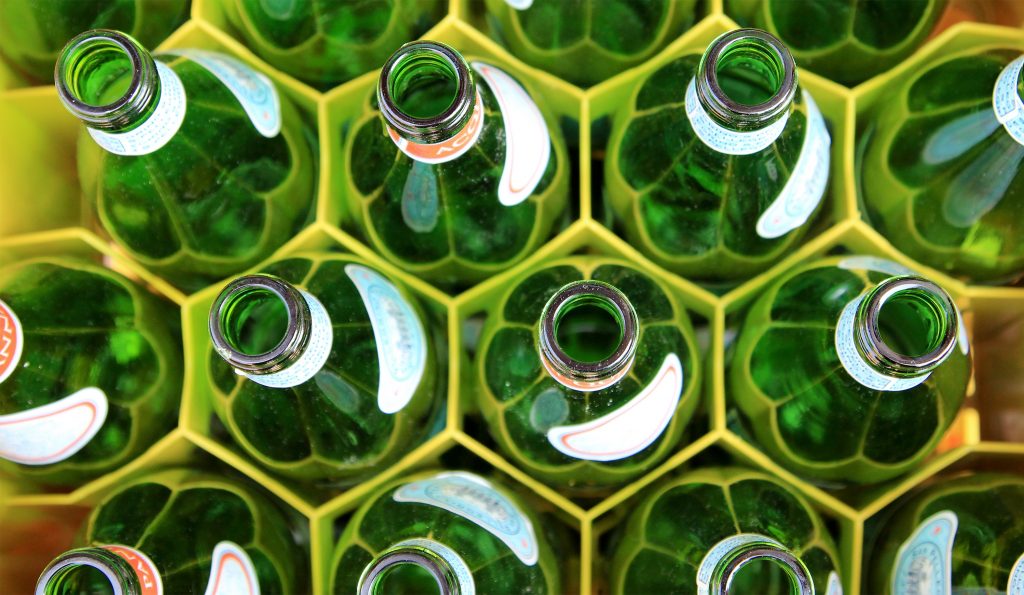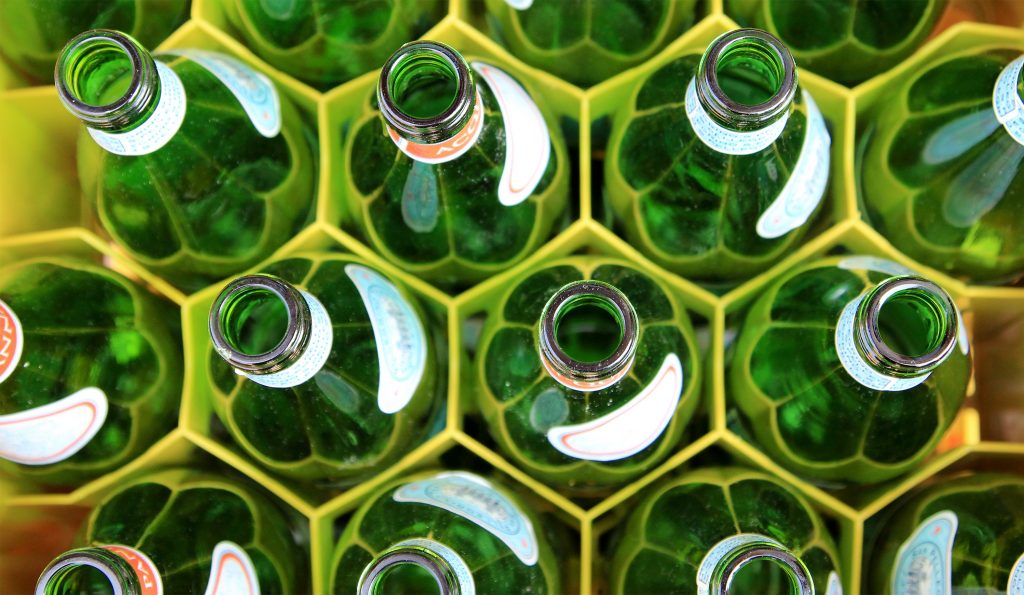
Glass is infinitely recyclable without loss in quality. Recycling glass has many proven environmental benefits–it reduces emissions, saves energy, and reduces consumption of raw materials. And as a common household item, recycling the material maintains much public support. In fact, 93% of residents and consumers expect to be able to recycle glass, reports the Glass Recycling Coalition. So why is glass no longer being accepted for recycling in some markets?
The reasons are varied. Here’s a breakdown of the issue, and what businesses and municipalities can do to address the problem, and potentially reduce their waste disposal costs.
Glass is becoming the contaminant
In a single stream recycling system, glass is increasingly becoming the contaminant. Broken glass can contaminate other recyclables like paper and cardboard, lowering their value. Since the China import ban, recyclers are increasingly focused on quality and reducing contamination to maintain the value of their recyclable materials.
Glass can be hazardous
Broken glass is not only a safety hazard to workers, but it can also damage machines at recycling facilities. As a result, glass is increasing processing costs.
Broken glass is difficult to sort
Most manufacturers require recyclable glass to be sorted by color in order to produce high quality glass bottles and jars. Glass is difficult to sort when broken, and if broken down too finely, glass may become too difficult to reprocess. When recyclers find it too difficult or expensive to separate out glass, they send the entire stream to the landfill. According to Recycle Across America, “More than 28 billion glass bottles and jars end up in landfills every year — that is the equivalent of filling up two Empire State Buildings every three weeks.”
Glass is heavy
Glass is heavy and expensive to transport. Faced with high costs, some communities are paying to have the glass specially crushed for use in construction. And while this is certainly a use for glass, it is not necessary the best use.
The market for glass has changed
Mandatory glass recycling programs in the 1980s flooded the market with recyclable glass, causing prices to drop. Over the past two decades, glass has also been replaced by aluminum and plastic for some products, leading to less demand.
What should businesses do?
1) Purchase less glass, especially for single-use items, and reuse when possible.
2) Seek alternatives. For restaurants and beverage retailers, the proliferation of the craft beer industry means more on draft and in cans (and fewer glass bottles). Aluminum bottles have also become very popular among beer consumers in recent years. Wine is still difficult, because there are fewer options for wine on draft and in cans, but that is expected to change.
3) Look for manufacturer/retail take-back programs that won’t leave your business holding the bag on glass.
4) Separate glass from the rest of the stream. This is a great idea if your business generates a lot of glass, and you can work with a hauler that specializes in glass. In general, separating any single material for recycling at the point of generation is never a bad idea. “Because of the difference in the quality of glass from the two streams, just 40% of glass from single-stream collection ends up being recycled into new products, compared with about 90% of glass from multistream systems.“
Note: Drinking glasses, glass objects, and window glass cannot be placed with recyclable glass because they have different chemical properties and melt at different temperatures than the recyclable bottles and containers. Broken drinking glass goes into the trash stream.
Glass Recycling Map
This glass recycling mapcan help you find end markets, MRFs and processors accepting glass near your business.
Learn More:
Discover how Great Forest has transformed businesses with smarter waste solutions, helping one client save over $10 million! Read these success stories for yourself: Case Studies.
Talk to us to find out what we can do for you.
Watch an 80-second summary of the largest global study of commercial waste:
Waste Data From Largest Global Waste Study Reveals Most Commercial Trash is NOT Trash
Waste Audit Facts and Benefits: What Every Business Needs To Know


